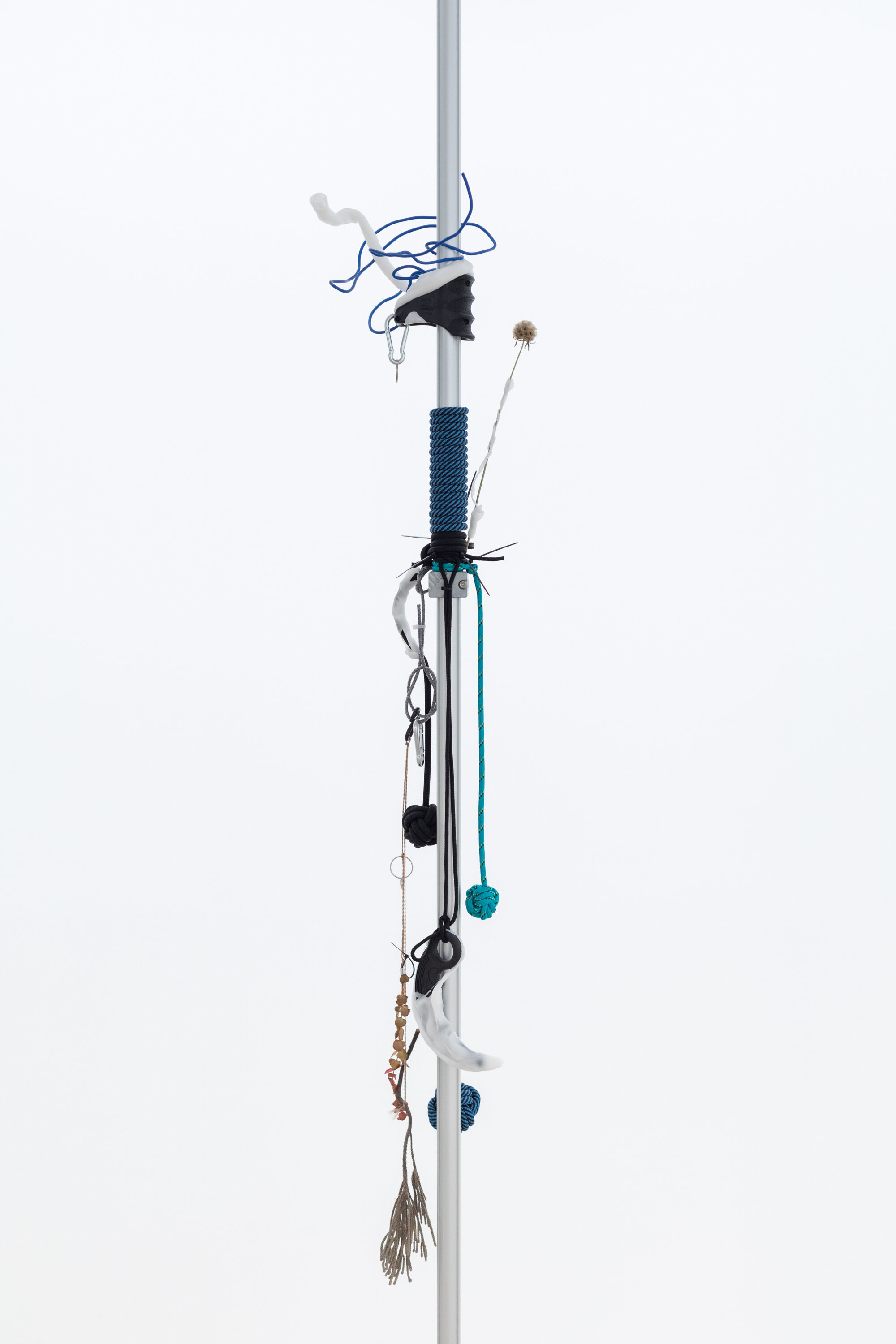Then a Kiss is Not a Kiss
2019
Multi-channel sound installation
(carbon, polycaprolactone, flowers, Nylon 6, dulodulo, steel, aluminum EcoShape, Element E-lite Personal Hook Signal IR LED, glass, foamiran, carpet, hair, Ultrasonic Acouspade Classic hyper directional sound system).
Commissioned by V-A-C Foundation
How do we understand the relationship between trauma and dysphoria? In his new installation, Kirill Savchenkov considers the “irregular warfare” of government policy and technology upon disor- ders such as stress, depression, anxiety and dysphoria,all of which are impacted by their conveyance in the media. Savchenkov considers the deep influence of eye-witnessing media and emotional evolve- ment, weaponised by the regimes of informational autocracies and users. The artist asks how we can rehabilitate those who have experienced this warfare, and offer a sense of healing and validation.
In this installation, Savchenkov explores recent proxy repression cases. He examines “The Network,” a Russian antifascist organisation persecuted by the state, alongside the case of the new president of the Philippines, Rodrigo Duterte, who used cyberbullying as part of his election campaign. Here, the artist interrogates the borders between different disorders and the forms of rehabilitation, which can be used for defining conflict scenarios. In a third case, Savchenkov investigates cultural dysphoria through the case of Rachel Dolezal – a former civil rights activist who came under scrutiny for claim- ing to be a black woman, despite having no African ancestry. Looking at these forms of dysphoria in relation to the digital era, and the contemporary ability to inhabit multiple subjectivities via digital means, the artist considers dysphoria as a metaphor for digital hybrids.
Text: Omar Kholeif















